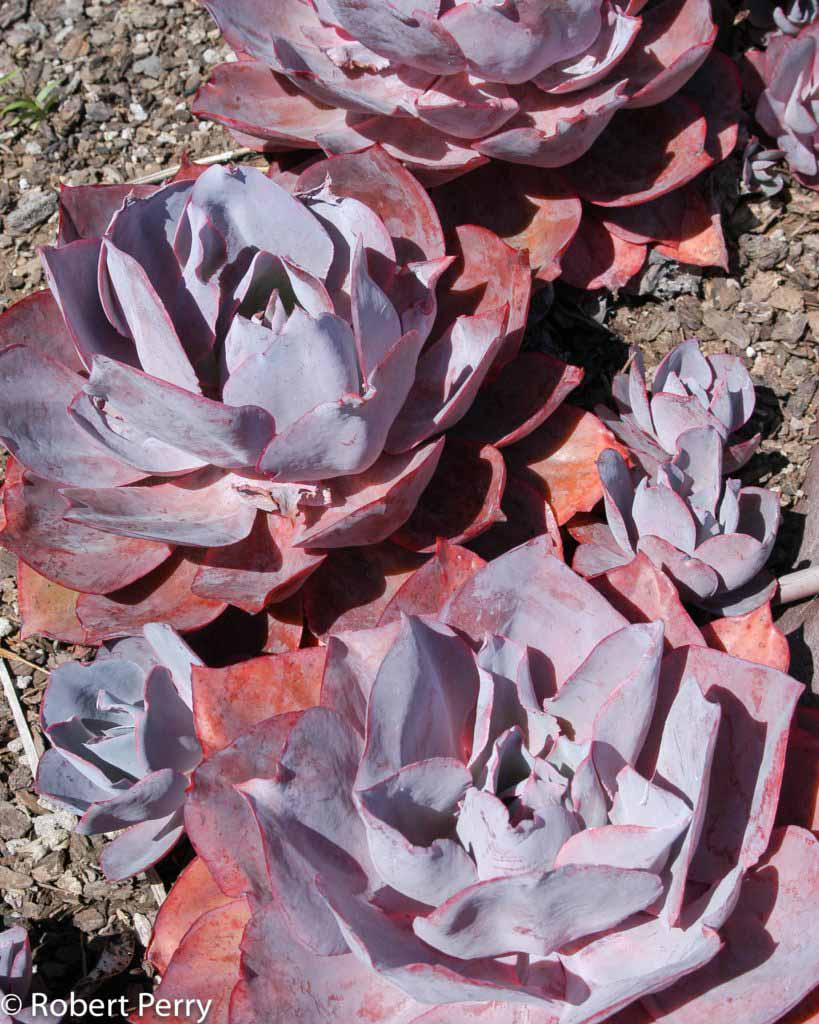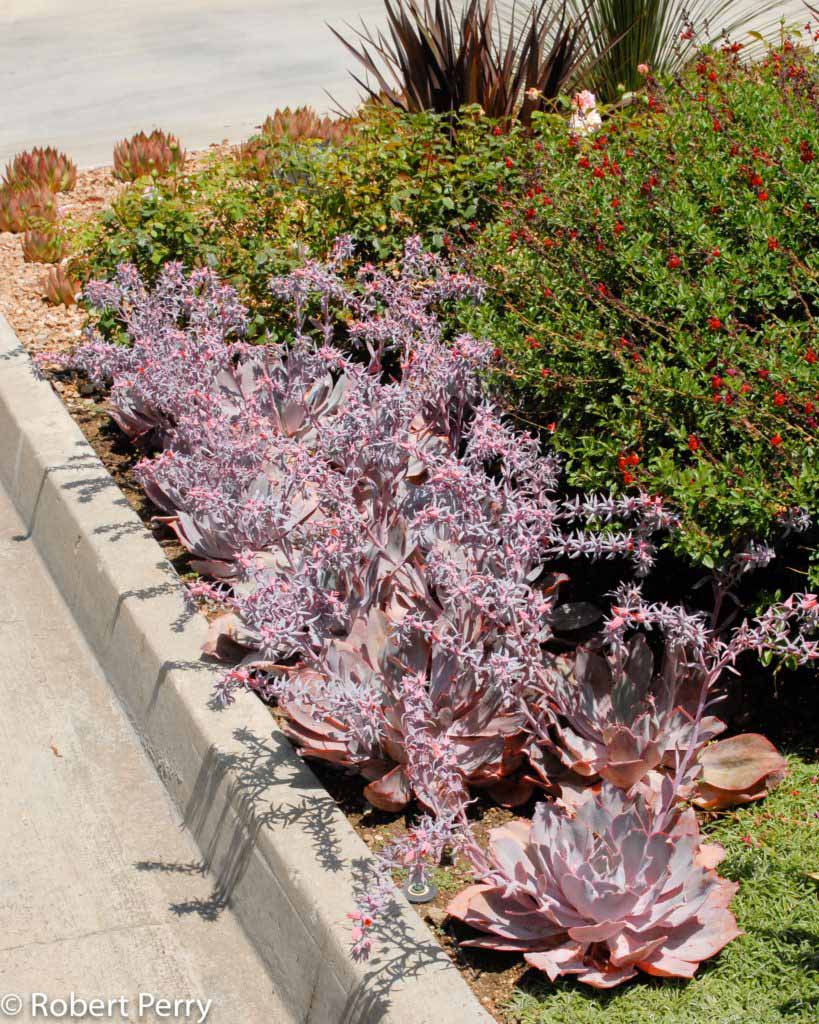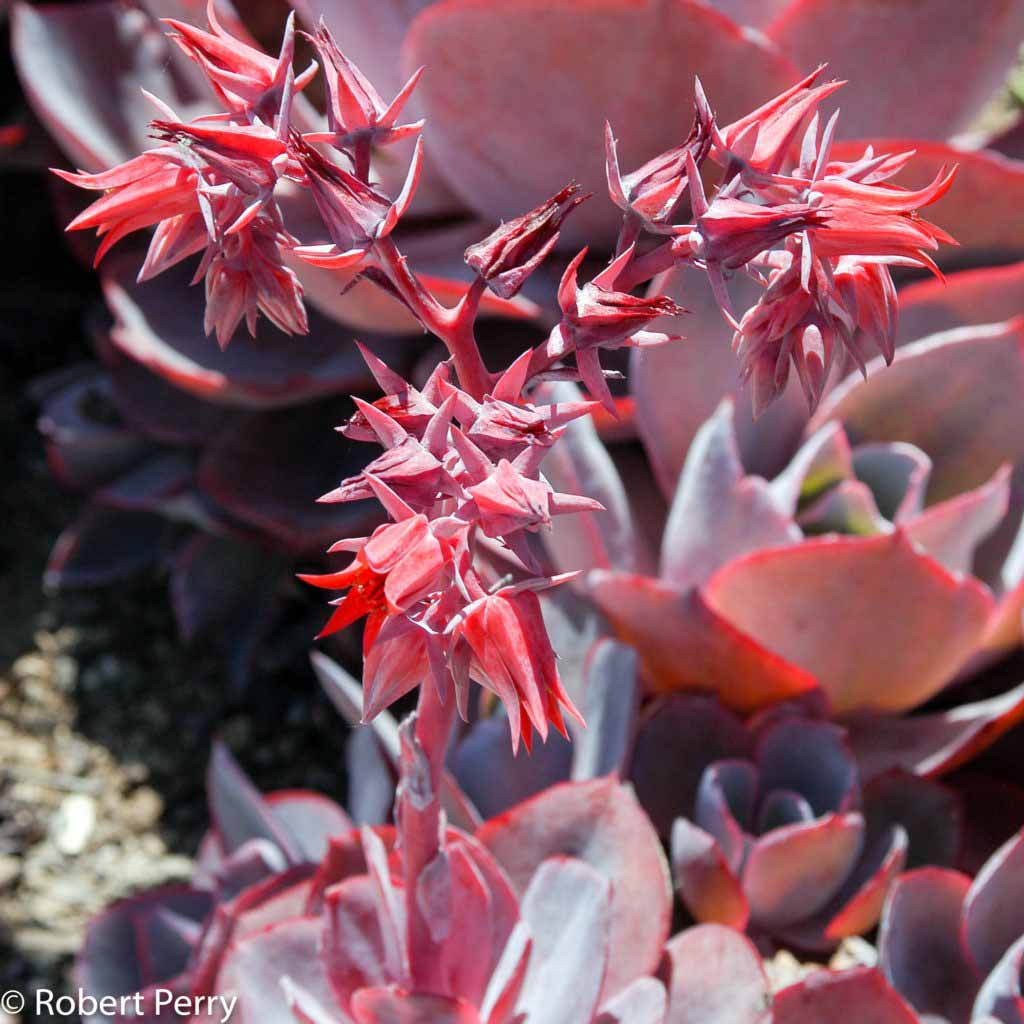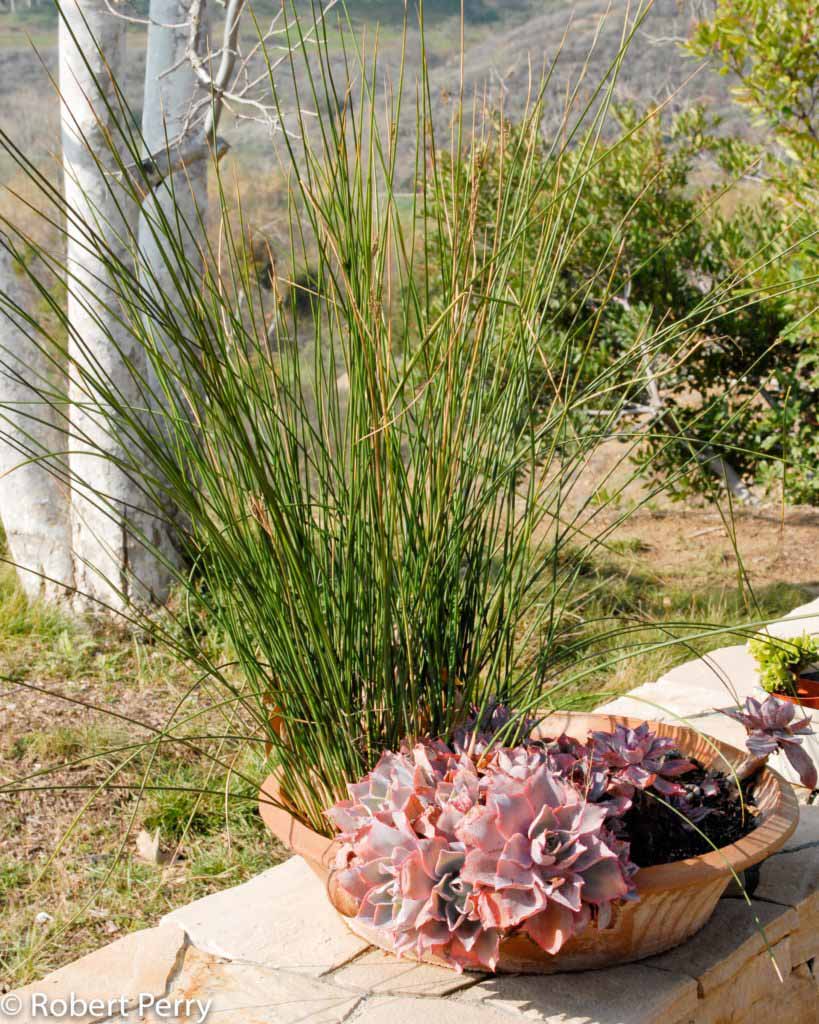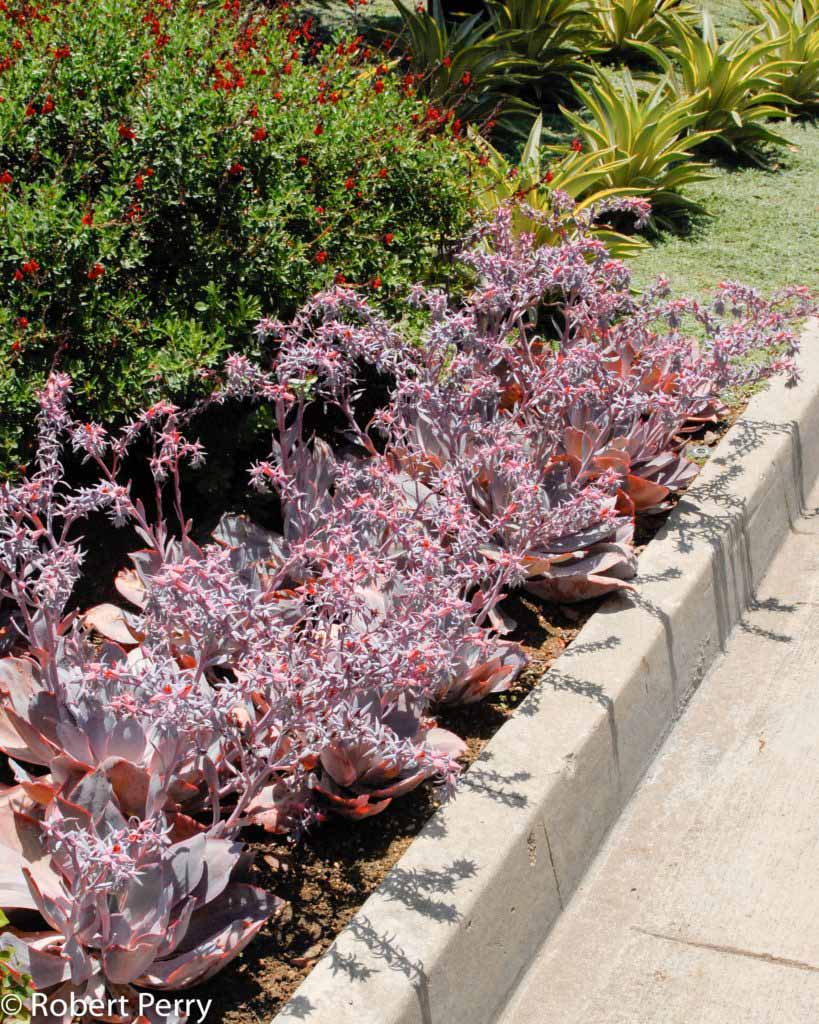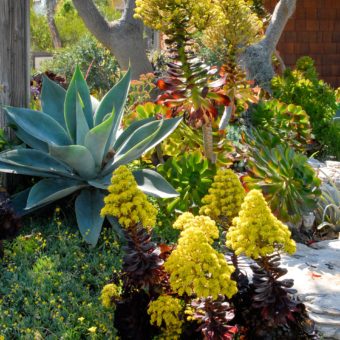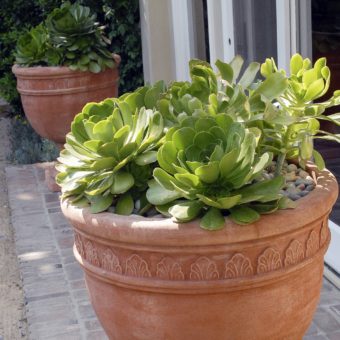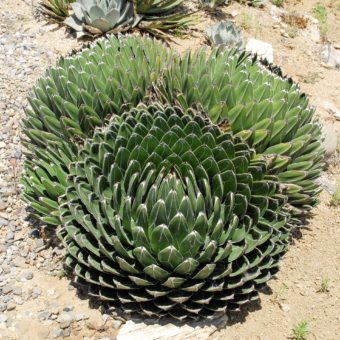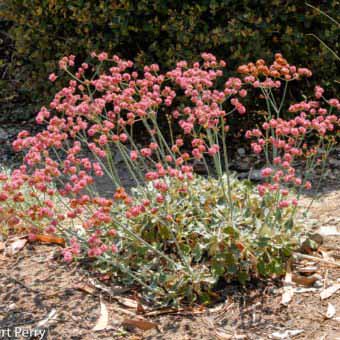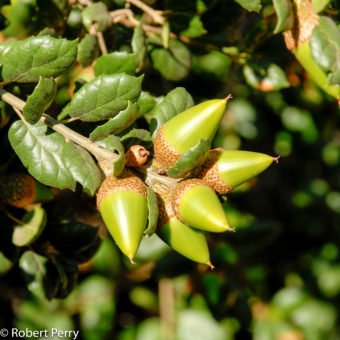Echeverias are a diverse group of perennial succulent plants that typically develop thick fleshy leaves arranged in distinctive rosette patterns. Approximately 150 species have been identified to date and are popular with plant collectors. Many cultivars are now available from nurseries and garden centers and are well adapted to light well-drained soils and with low amounts of supplemental moisture from late spring through summer.
Echeverias prefer brightly lit locations without exposure to intense summer sun. They provide a wonderful array of distinctive foliage colors for ornamental use. Color often varies throughout the season in response to temperatures and sun exposure. Distinctive bell-shaped flowers grow on tall flexible stems at different times of the year depending upon the species. They are often grown in pots and are highly suited to small spaces for detailed planting effects and in mass plantings to create bold visual patterns.
Echeveria ‘Afterglow’ has distinctive glaucous purple leaves with red margins that produce a highly colorful impact. New growth and flowers develop each spring and are bright rosy-red. Individual plants grow 10-12 in. across and produce flower stalks 15-18 in. tall.
